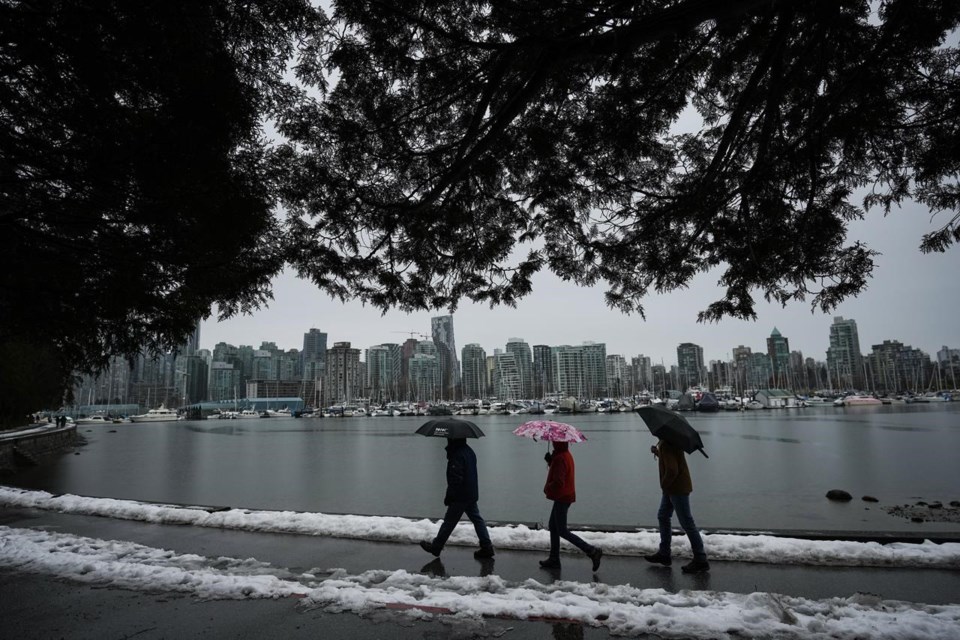VANCOUVER — The peak of a so-called king tide has passed without major damage in Vancouver, as flood watches and high streamflow advisories remain posted across Vancouver Island and much of British Columbia's inner south coast.
The big tide combined with heavy rain and snowmelt had raised the risk of flooding after pre-Christmas snowstorms.
The River Forecast Centre posted flood watches for Metro Vancouver, the Fraser Valley, Howe Sound and the southern two-thirds of Vancouver Island as heavy rain drenched the regions on Sunday and Monday, speeding melt and causing additional run-off.
Environment Canada called for 60 to 120 millimetres of rain across the Sunshine Coast and Metro Vancouver by early Wednesday.
The weather office said it had "high confidence" the rain and snowmelt, coupled with strong winds and high tides, would cause potentially damaging coastal flooding on low-lying areas from Vancouver and Howe Sound to the Sunshine Coast, East Vancouver Island and southern Gulf Islands.
The River Forecast Centre also said officials were keeping a close eye on the situation in northwest Washington state where a flood watch was in effect as the Nooksack River threatened to top its banks.
High water on that river was linked to last November's devastating floods in the Fraser Valley and the centre said there may be a "small chance of a minor overflow" into the Sumas River drainage on the B.C. side of the border.
The City of Vancouver had warned Monday of elevated flood risk as so-called king tides — exceptionally high seasonal tides — were due early Tuesday at the same time as strong winds were forecast to cause a significant storm surge.
"Low-lying areas … will be at an elevated flood risk and may experience overland flooding," the city said in a statement.
The city had closed part of the Stanley Park seawall as a precaution.
But no major damage was reported, the city said in a statement on Twitter Tuesday.
It posted photos taken at the peak of the tide, showing flooded grassland and roads near several beaches around English Bay, but no major damage.
Environment Canada said the tide pushed water levels at Point Atkinson in West Vancouver to a height of 5.70 metres, breaking the previous record of 5.61 metres set in 1982.
Water levels were expected to fall and conditions were forecast to improve through Tuesday afternoon and evening, the weather office said on its website.
It was maintaining a rainfall warning for Howe Sound and Metro Vancouver, advising of localized flooding, water pooling on roads and the potential for debris flows, while the flood watches and high streamflow advisories issued Monday by the River Forecast Centre also remained in effect.
A landslide 23 kilometres west of Sechelt on Highway 101 closed that road and DriveBC said a detour was not available.
There were no reports of injuries and the District of Sechelt said on social media that the situation was being assessed.
Elsewhere, Environment Canada was maintaining winter storm warnings or special weather statements for parts of the southern and southeastern Interior as 25 to 30 centimetres of snow was forecast in the Kootenay and Boundary area before changing to rain or freezing rain later in the day.
A travel advisory was posted urging drivers to stay off Highway 3 east of Osoyoos. The route remained open, although DriveBC, the province's online travel advisory system, warned of the "high probability" of closures on short notice.
Highway 1 through the Fraser Canyon just north of Hope was shut down Monday because of an avalanche hazard.
This report by The Canadian Press was first published Dec. 27, 2022.
The Canadian Press



